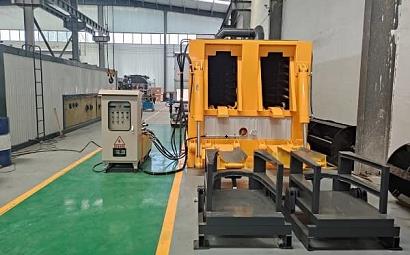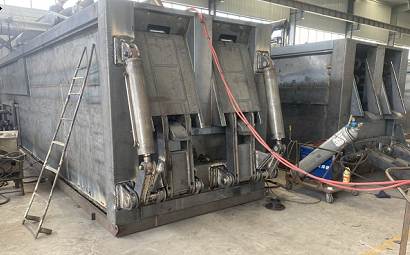I. Capacity comparison analysis
Small mixing plants can process 20-60 tons of mixture per hour, which is suitable for county and township roads or sporadic repair projects; large mixing plants have a capacity of more than 200 tons/hour, which can meet the needs of high-intensity construction such as highways. When choosing, it is necessary to combine the project schedule and the average daily usage for comprehensive calculation.
II. Investment and operating cost composition
Large equipment has a high degree of automation and complete environmental protection facilities, and the initial purchase cost is 40%-60% higher than that of small equipment. However, its unit energy consumption is reduced by 12%-15%, and the cost can be diluted through large-scale production in long-term operation.

III. Site planning requirements
The foundation of a small mixing plant covers an area of ??about 80-120 square meters, which is suitable for temporary mobile installation; a large station needs to reserve a fixed site of more than 500 square meters, and needs to be equipped with an aggregate yard and finished product silo. The nature of the land and environmental impact assessment requirements need to be evaluated when selecting a site.
4. Differences in core technology configuration
Small stations mostly use intermittent mixing hosts, equipped with simple burners and bag dust removal; large stations are equipped with continuous mixing systems as standard, with thermal regeneration functions and four-stage dust removal devices, and some models also integrate intelligent temperature control systems.
5. Maintenance and transportation considerations
The modular design of small equipment is convenient for transfer and transportation, but the durability of components is relatively low; large stations use heavy steel structures, and the maintenance cycle is extended by 30%, but professional teams are required for installation and commissioning.
From the above comparison, it can be seen that equipment selection requires a comprehensive assessment of factors such as construction scale, capital budget, and environmental protection standards, and there is no universal solution. It is recommended to entrust a professional organization to conduct a feasibility study before purchasing.
 Albanian
Albanian  Russian
Russian  Arabic
Arabic  Amharic
Amharic  Azerbaijani
Azerbaijani  Irish
Irish  Estonian
Estonian  Odia (Oriya)
Odia (Oriya)  Basque
Basque  Belarusian
Belarusian  Bulgarian
Bulgarian  Icelandic
Icelandic  Polish
Polish  Bosnian
Bosnian  Persian
Persian  Afrikaans
Afrikaans  Tatar
Tatar  Danish
Danish  German
German  French
French  Filipino
Filipino  Finnish
Finnish  Frisian
Frisian  Khmer
Khmer  Georgian
Georgian  Gujarati
Gujarati  Kazakh
Kazakh  Haitian Creole
Haitian Creole  Korean
Korean  Hausa
Hausa  Dutch
Dutch  Kyrgyz
Kyrgyz  Galician
Galician  Catalan
Catalan  Czech
Czech  Kannada
Kannada  Corsican
Corsican  Croatian
Croatian  Kurdish (Kurmanji)
Kurdish (Kurmanji)  Latin
Latin  Latvian
Latvian  Lao
Lao  Lithuanian
Lithuanian  Luxembourgish
Luxembourgish  Kinyarwanda
Kinyarwanda  Romanian
Romanian  Malagasy
Malagasy  Maltese
Maltese  Marathi
Marathi  Malayalam
Malayalam  Malay
Malay  Macedonian
Macedonian  Maori
Maori  Mongolian
Mongolian  Bengali
Bengali  Myanmar (Burmese)
Myanmar (Burmese)  Hmong
Hmong  Xhosa
Xhosa  Zulu
Zulu  Nepali
Nepali  Norwegian
Norwegian  Punjabi
Punjabi  Portuguese
Portuguese  Pashto
Pashto  Chichewa
Chichewa  Japanese
Japanese  Swedish
Swedish  Samoan
Samoan  Serbian
Serbian  Sesotho
Sesotho  Sinhala
Sinhala  Esperanto
Esperanto  Slovak
Slovak  Slovenian
Slovenian  Swahili
Swahili  Scots Gaelic
Scots Gaelic  Cebuano
Cebuano  Somali
Somali  Tajik
Tajik  Telugu
Telugu  Tamil
Tamil  Thai
Thai  Turkish
Turkish  Turkmen
Turkmen  Welsh
Welsh  Uyghur
Uyghur  Urdu
Urdu  Ukrainian
Ukrainian  Uzbek
Uzbek  Spanish
Spanish  Hebrew
Hebrew  Greek
Greek  Hawaiian
Hawaiian  Sindhi
Sindhi  Hungarian
Hungarian  Shona
Shona  Armenian
Armenian  Igbo
Igbo  Italian
Italian  Yiddish
Yiddish  Hindi
Hindi  Sundanese
Sundanese  Indonesian
Indonesian  Javanese
Javanese  Yoruba
Yoruba  Vietnamese
Vietnamese  Hebrew
Hebrew  Chinese (Simplified)
Chinese (Simplified)






